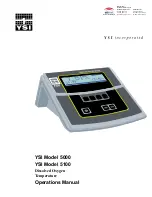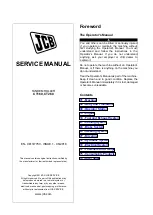
30
Model D2424LVmkII Reference Manual (Before Starting)
Audio file and event
<About an audio file>
During recording, the recorder consecutively records an independent audio file (recorded area) in each
track of each Program. However, you can record data on the recorder at any point within 24 hours of
ABS time, and you can intentionally create silence between two audio files. In this case, a silent part is
counted as a 0 file.
Therefore, audio files and 0 files are consecutively created as shown in the diagram below.
The total number of these audio files and 0 files is called “
the number of events
.” The maximum number
of events is 512 per track (tracks 1-24). After the number of events reaches 508, new data will not be
recorded.
Usually, an event is created by one recording or edit. The number of events increases or decreases
depending on the number of edit points or the amount of disk free space. (The recorder disk management
operates in such way that the number of events will decrease.) The number of events does not affect
usual music production. However, if a small amount of single-track data is written in many different
sections on the disk, the maximum number of events may be reached. To avoid this “
event number
overflow
,” you need to check the number of events for each track.
The recorder provides an event check menu in Setup mode for this purpose.
<Notes on digital recording>
During analog recording, “
0 files
” are not created since silence does not create “
data 0
.”
However, during S/P DIF and adat digital recording, the recorder records “
data 0
” (this is called “mute recording”).
When one second of consecutive data 0 is input to the recorder, it creates a “
0 file
” and limits the consumption
of disk space. However, repeating this operation will eventually increase the number of events, leading to “
event
number overflow
.”
What is an event?
As shown in the diagram below, the number of events can be eleven or more if partial recordings are
made. This is because an unrecorded part is regarded as an event, and a recorded part is also regarded
as an event(s). The duration of each event can vary from 740 msec to 23 hours 59 minutes 59 seconds
(FS =44.1kHz).
An unrecorded part (zero file) is always regarded as one even, regardless of its duration.
However, a recorded part can consist of a group of multiple audio file, as shown in the diagram below.
More precisely, one audio file will be divided into multiple audio files if perform many editing operations
(such as , copy & paste, move & paste, etc.) on this audio file.
Multiple audio files created in this way are regarded as events. (If you do not edit the data at all, the
audio file remains in one piece and is regarded as one event.)
In this example, one recorded area consists of six consecutive audio files. This means that this part
consists of six events.
ABS 0
REC END
Recorded part
Silence
Audio File 1
Audio File 2
Audio File 3
Audio File 4
0 File 1
0 File 2
ABS 0
REC END
Recorded part (shortest: 740 msec., FS=44.1kHz)
Unrecorded part (shortest: 740 msec., FS=44.1kHz)
ABS 23h 59m
0
1
2
3
4
5
6
7
8
9
10
11
Event Number
Summary of Contents for D2424LVmk2
Page 157: ......
















































